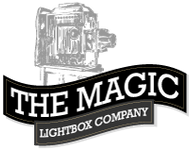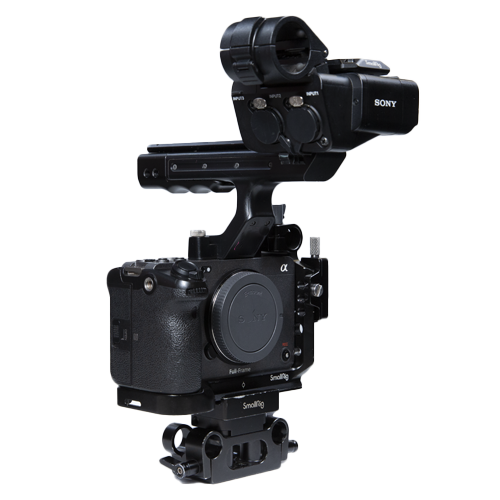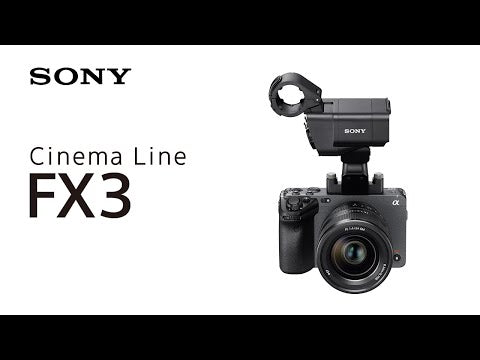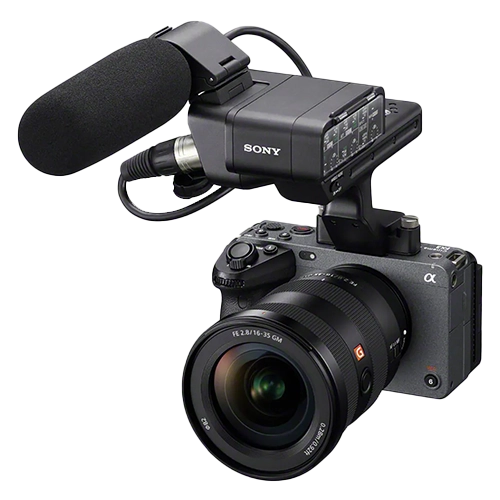
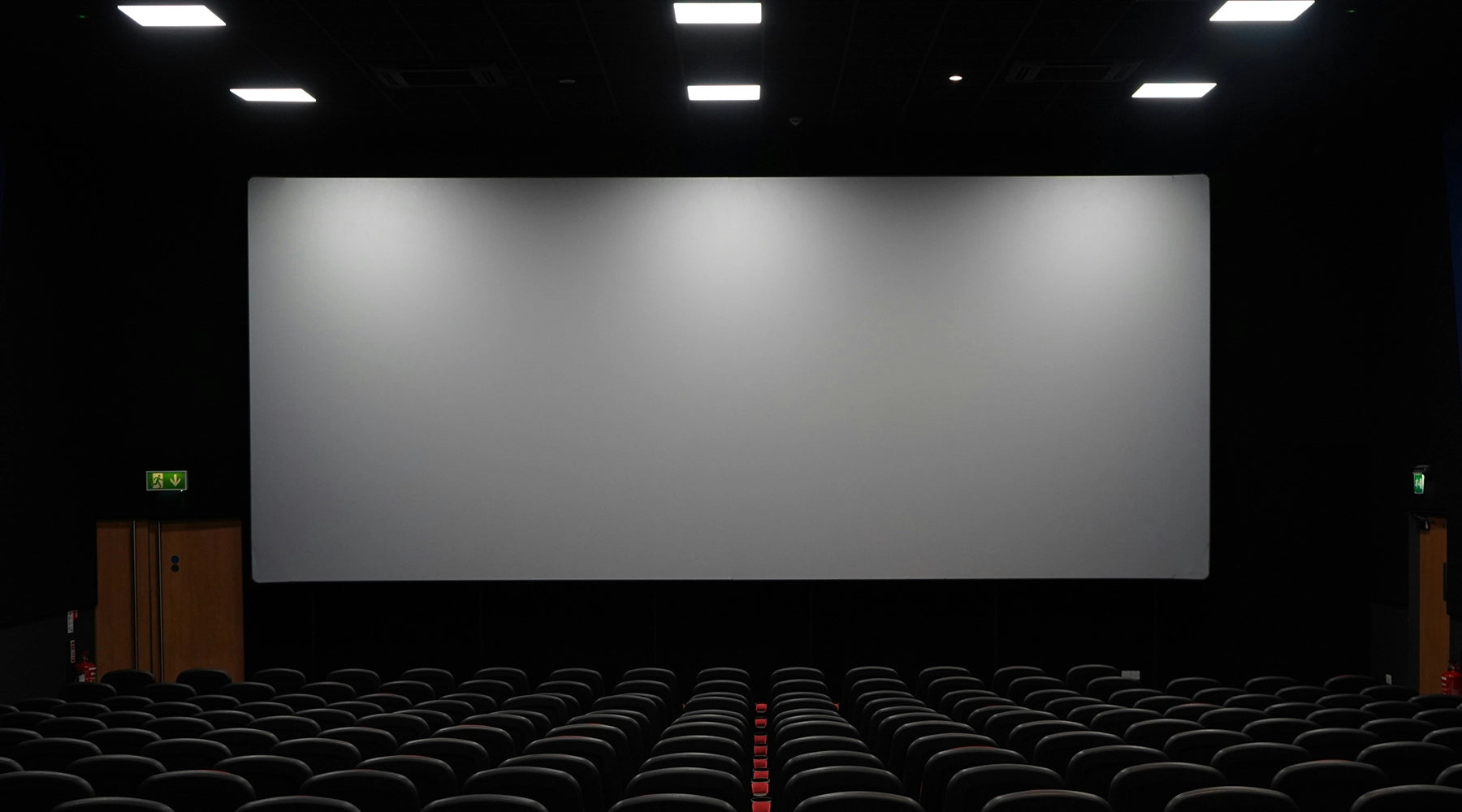
Big screen production on a small screen budget
So, you want to hit the big screen, but the budget doesn’t quite match the big dreams you have for your project. Low budget doesn’t mean low quality. Just look at the successes of ‘The creator’ which was shot on an FX3 camera, and that of ‘Everything Everywhere All At Once’ with their creative use of practical VFX. With smart choices and the right equipment, you can achieve the same with your project. Let’s start off with the basics:
Camera gear:
Your dreams of hitting the big screen or even the big stream with the likes of Netflix are not far out of reach. Netflix has a number of approved cameras to use, one of which is the Sony FX3.
This lightweight, budget-friendly powerhouse proves that big dreams don't need Hollywood budgets. Packed with high-end features typically found in pricier cameras, the FX3 empowers you to tell your story without breaking the bank.
So, what makes the FX3 the perfect budget warrior?
Cinematic Look on a Budget: Forget expensive lighting setups. The FX3's full-frame sensor delivers stunning shallow depth of field and beautiful bokeh, instantly adding a cinematic touch to your visuals. Imagine those dreamy blurs and crisp foreground subjects, all without costing a fortune on extra equipment.
Internal Recording: Ditch the bulky external recorders! The FX3 captures high-quality footage directly to the camera, saving you both space and money. Imagine recording stunning 4K footage at up to 120fps, all self-contained and ready to edit.
Slow-Motion Made Easy: Unleash your creative vision with impressive high frame rates. Capture captivating slow-motion sequences to add drama, tension, or humour – no specialized equipment needed. Imagine stretching time, emphasizing key moments, and wowing your audience with silky smooth slow-mo sequences.
But the FX3's strengths go beyond these headline features. Its compact and lightweight design makes it a dream for handheld shooting and run-and-gun filmmaking, perfect for dynamic storytelling on the go. Plus, the advanced autofocus system ensures professional-looking focus, even in challenging lighting conditions.
Of course, no camera is perfect. The FX3's menu-driven controls might take some getting used to compared to dedicated buttons on higher-end options. Additionally, the lack of an internal ND filter requires additional purchases for variable light control. However, these limitations can be easily managed with practice and creative planning.
Remember, the power lies in your story and execution. The FX3 provides the tools, but your creativity unleashes its true potential. So, explore its capabilities, hone your skills, and don't let budget constraints hold you back.
Is the FX3 the only option? Absolutely not!
Explore similar cameras like the A7S III or Blackmagic Pocket Cinema Camera 6K Pro, each with their own strengths. But remember, the FX3's full-frame sensor and portability offer unique advantages for budget-conscious filmmakers.
Budget Camera, Big Success
The movie "The Creator" certainly garnered attention for its use of the Sony FX3 camera, here's what we know:
Majority of the film was shot with the FX3, while some scenes used the FX9 for genlock filming on the Volume (a large-scale LED stage), the FX3 was the workhorse camera. This choice allowed the film to achieve high-quality visuals while staying within its $80 million budget, significantly lower than typical big-budget films.
The filmmakers strategically used lighting, composition, and color grading to maximize the potential of the FX3, achieving a cinematic look despite its smaller sensor size compared to traditional cinema cameras.
The film's visual quality drew praise from critics and audiences, demonstrating the capabilities of the FX3 in skilled hands. There have been discussions about the limitations of the FX3 versus higher-end cinema cameras, particularly in terms of dynamic range and low-light performance. However, proponents argue that these can be mitigated with skilled cinematography and post-production techniques.
Budget Lenses… Any good?
Forget the hefty price tags of Zeiss and Cooke – achieving that coveted cinematic look doesn't require breaking the bank. While their reputation is well-deserved, there are other players offering equally feature-rich and unique lenses, perfect for the budget-conscious filmmaker.
Sigma: Your Cinematic Budget Ally
Enter Sigma, a specialist in high-quality cinematic lenses that rival even Sony's coveted G Master series. With a wide range of focal lengths and fast apertures at a fraction of the cost, they're a dream come true for budget-minded creators. But how does their star performer, the 24-70mm f/2.8, compare to the Sony counterpart?
Image Quality Showdown:
Both lenses are phenomenal performers, delivering sharp images with stunning bokeh and minimal distortion. While Sony's GM II might boast a slight edge in sharpness towards the edges, Sigma takes the crown for colour rendering. Its warmer, more pleasing tones have won over many users seeking a unique aesthetic.
Price: A Budget Filmmaker's Dream
But let's face it, price matters. And here, Sigma shines. Clocking in at almost half the cost of the Sony GM II, it's a game-changer for filmmakers on a budget. Remember, affordability doesn't mean compromise – the Sigma delivers exceptional quality without burning a hole in your pocket.
Size and Handling:
While slightly heavier and larger than the Sony, the Sigma remains relatively compact for its class. Ultimately, your choice hinges on your portability and handling preferences. Do you favour a lightweight setup for run-and-gun shooting, or a slightly heavier lens for added stability?
Autofocus:
Both lenses boast fast and accurate autofocus, ideal for professional use. While the Sony might edge out in speed and tracking, the difference is minor for most situations. So, rest assured, capturing those critical moments won't be a concern.
Perks and Drawbacks
The Sony GM II boasts weatherproofing, a valuable feature for challenging environments. However, the Sigma counters with a customizable L-Fn button for added control, giving you more ways to personalize your shooting experience.
The Verdict: Budget vs. Performance
If achieving the absolute pinnacle of sharpness and weatherproofing is your top priority, the Sony GM II might be worth the splurge. But for most budget-conscious filmmakers who value affordability and excellent overall performance, the Sigma 24-70mm f/2.8 DG DN Art is an absolute winner.
Beyond Sigma: Exploring Unique Options
For a truly unique cinematic effect, venture beyond the traditional. The Laowa 24mm f/14 Probe Lens offers an unconventional approach at an affordable price, though it might be better suited for a camera like the Blackmagic Pocket Cinema. Remember, experimentation is key!
"Everything Everywhere All at Once": Budget-Conscious Brilliance
"Everything Everywhere All at Once" (EEAAO) isn't just a mind-bending cinematic experience; it's a masterclass in achieving big-screen quality with creative solutions on a smaller budget. The Daniels, the film's directors, are known for their resourceful approach, prioritizing ingenuity over exorbitant costs. But how did they pull it off? Let's delve into their secret weapons:
Budget-Friendly Tech Arsenal:
RED Komodo Camera: While not the cheapest on the market, the Komodo offered a sweet spot of flexibility and image quality at a significantly lower price compared to traditional high-end cinema cameras. This allowed them to capture stunning visuals without breaking the bank.
Sigma Lenses: Ditching pricier native lenses, they embraced affordable Sigma alternatives. These lenses delivered good quality at a lower cost, proving that budget constraints don't have to compromise visual storytelling.
Post-Production Powerhouse: Forget expensive CG! The Daniels relied heavily on colour grading and compositing in post-production. This not only enhanced the visuals but also allowed them to add subtle VFX touches without requiring extensive resources.
Beyond Technology: Resourcefulness Reigns Supreme:
EEAAO wasn't just about the tech. The filmmakers embraced a resourceful mindset throughout the process:
Practical VFX: Instead of relying solely on CG, they used creative costumes, makeup, and practical effects to create the unique visuals of different universes. Think hot dog fingers, the unforgettable ratatouille chef fight, and the iconic "Everything Bagel" battle. Talk about maximizing impact with budget-friendly techniques!
Location Transformation: They utilized existing locations effectively, transforming them with clever set design and lighting. The laundromat became various settings through creative decoration, demonstrating how resourcefulness can turn everyday spaces into extraordinary settings.
Forced Perspective Magic: This classic technique was used to create the illusion of larger sets or characters, like Michelle Yeoh towering over her surroundings. It's a reminder that creative thinking can overcome limitations.
The Takeaway: Big Dreams, Budget Solutions
EEAAO is a shining example of how budget restrictions can fuel creativity and innovation. By embracing affordable technology, practical solutions, and resourceful thinking, the filmmakers crafted a visually stunning and emotionally resonant film. So, remember, aspiring filmmakers: don't let a limited budget stifle your vision. Embrace resourcefulness, explore creative techniques, and let your story shine through – the big screen awaits!
Embrace the Journey
Whether you choose Sigma, Sony, or explore further, remember that the journey is just as important as the destination. Embrace experimentation, hone your skills, and let your creative vision guide you. With the right tools and a passionate spirit, your story can captivate audiences, budget or not. Now go forth and create something amazing!

